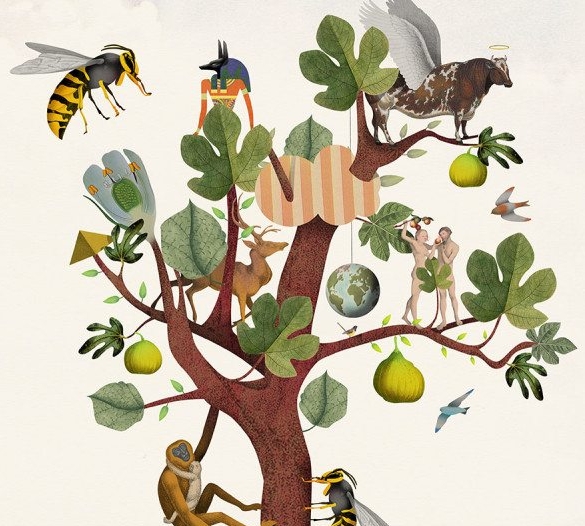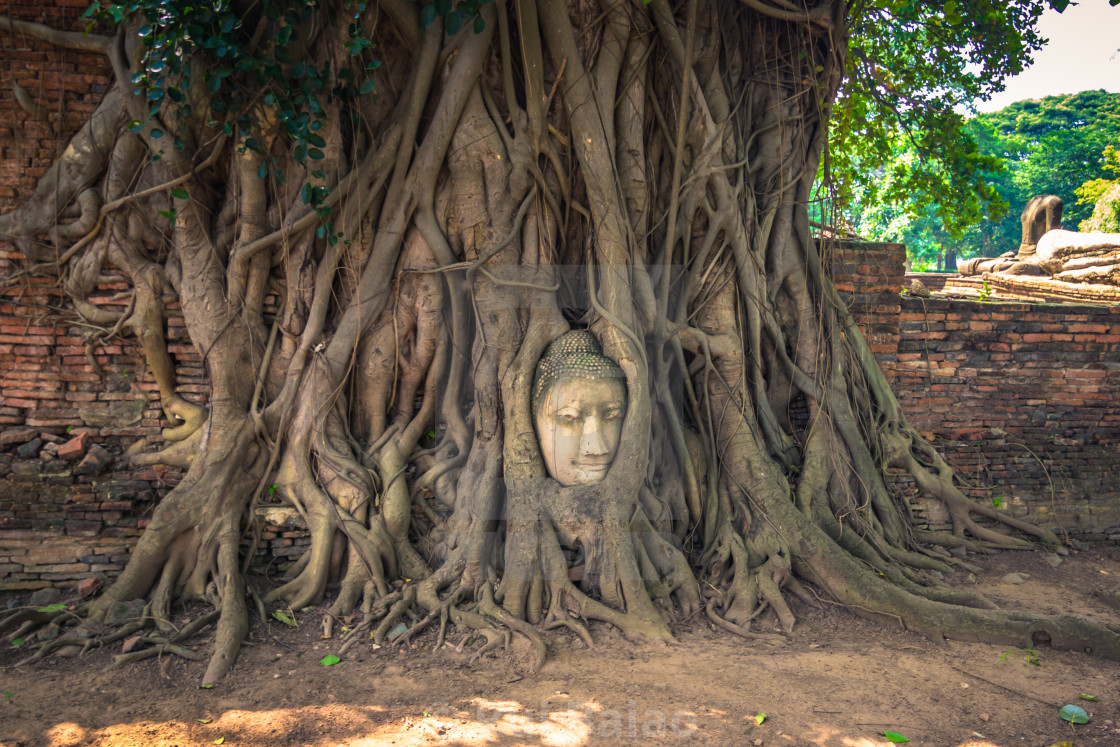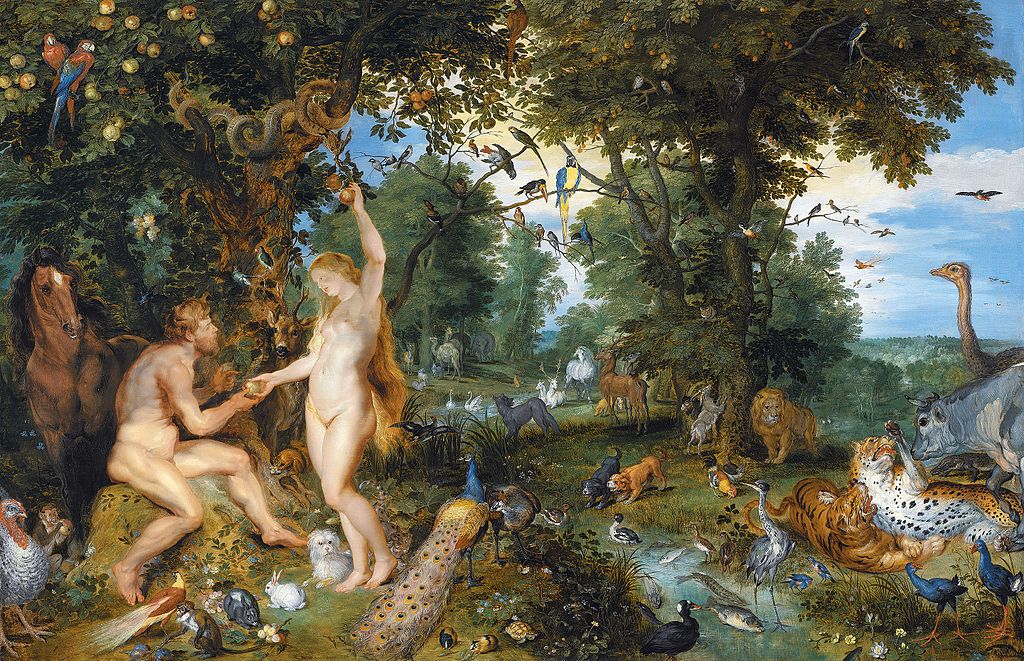
Photo: Brett Ryder
‘THEIR leaves clothed Adam and Eve; their roots were used by the Maasai people’s god to shuttle the first cattle from heaven to Earth; and according to an Indonesian story, two gods carved the first couple from their wood. The presence of fig trees in numerous origin myths is down to more than coincidence. They have shaped our world since long before the dawn of humanity, and have fed us and our imaginations for millennia. Now, as the world warms and forests fall, these extraordinary trees could help us to restore life to deforested landscapes.
It’s all because fig trees cut a curious deal with tiny wasps back when dinosaurs still roamed. Thanks to this, they sustain far more biodiversity than other trees. Today, there are more than 750 species of Ficus, each of which relies on its own wasp species to pollinate its flowers. In turn, the wasps can only breed inside the figs of their partner tree. Genetic studies suggest that this remarkable codependency is at least 80 million years old.’- Tree of life: How figs built the world and will help save it
Trees of Life, Trees of Knowledge- Ecology and Mythology of the Fig Tree

Ancient Buddha head in the fig tree at Wat Mahathat in the historic city of Ayutthaya, Thailand.-Photo:Picfair
The tree that shaped human history
By Mike Shanahan, Via BBC Earth
‘Fig trees have not only witnessed history but have shaped it and they could even enrich our future.’
Over 2,000 years ago, an important tree had one of its branches removed on the order of Indian emperor Ashoka the Great. It was under this very tree that the Buddha is said to have attained enlightenment. Ashoka bestowed kingship on the branch, and planted it in a thick-rimmed solid gold vase.
He then took the branch over mountains and down the Ganges River to the Bay of Bengal. There, his daughter carried it aboard a ship and sailed for Sri Lanka to present it to the king. Ashoka loved the plant so much that he shed tears as he watched it leave.
This story, from the epic poem The Mahavamsa, is about a kind of fig tree scientists call Ficus religiosa. True to its name, an unbroken line of devotion towards it stretches back to thousands of years before Ashoka's time.
But F. religiosa is not alone. It is just one of more than 750 fig species. No other plants have held such sway over human imagination. They feature in every major religion and have influenced kings and queens, scientists and soldiers. They played roles in human evolution and the dawn of civilisation. These trees have not only witnessed history; they have shaped it. If we play it right, they could even enrich our future…’- Continue to read
Discover more:
The Fig Tree Fed Ancient Civilizations and Feeds Modern Gardeners Today*

Plants and fruit trees of the garden of Eden
Figs - Ficus carica. This is the easiest one to identify as it is mentioned in Genesis 3:7
‘…And the eyes of them both were opened and they knew that they were naked; and they sewed fig leaves together, and made themselves aprons…-
Photo and text: PLANTS AND FRUIT TREES OF THE GARDEN OF EDEN
‘The Fig Tree that grows in today’s fruit garden is a tropical-like crop that matures figs in the Summer even in Northern States with a cold hardy character unknown until the last decade. Hybrid fig trees have been shown to survive temperatures of zero degrees in outside gardens and re-grow to produce various colored fig fruit in the Summer, colored, green, brown, black, blue, purple, white and yellow – tasty and delicious. The fig is tree ripe when the shape of the fig sags and is sweetest when picked to dry in the sun. The dried fig contains considerable sugar and can be used as fig newtons, fig candy or fig rolls. The cold hardy character of the fig means that the fig tree can be extensively grown when properly mulched throughout the U.S.
The fig tree was one of the ancient fruits recorded in the Bible along with the pomegranate, olive, grape and date palm that fed ancient civilizations reliably. A famous Bible reference in the Gospels of Matthew & Mark notes that Jesus cursed a fig tree, and the Apostle Peter noted that because the fig tree had no available figs to eat, the fig tree instantly withered. Many Bible Scriptures cite the fig tree leafing out as being a sign of Summer and also a sign of the apocalypse when Jesus returns to earth to rapture His Christian followers. The fig tree is highly productive and produces several waves of fig ripening, if the figs are picked often from the tree. In Europe the fig is sold fresh at markets or dried into fig bars or sold in cafes as fig desserts. The great problem with fig trees is the short shelf life of the fig after harvest, but drying the fig is an excellent alternative to spoiling.
Wildlife animals love to eat figs especially birds and many fig growers cover their trees with netting to thwart wildlife game. Farmers have known in the South that planting a fig tree in a pig lot will provide cheap food to fatten hogs. The fig tree is easy to grow and appears to favor sandy soil of low fertility. The greatest threat to fig trees is the old garden site that grows tomatoes and peppers where the nematode (eelworm) thrives in large populations. The nematode goes directly into the soft fleshy roots of the fig tree causing the fig tree to decline and the nematode can even crawl up into the bark to eat the fig leaf or fig fruit.
ANCIENT FIG TREES THROUGH HISTORY
The fig tree, ‘Ficus carica,’ possibly originated in Northern Asia according to archeological fossil records. Spanish missionaries brought it to the United States in 1520. Historical Sumerian tablets record the use and consumption of figs in 2500 BC. In Greek mythology, the fig figures prominently as a gift of Demeter to Dionysus and as having received the blessing and sanctity of the Greek Gods. Plato documented that Greek athletes at Olympia were fed diets of figs to increase their running speed and overall strength. The figs contained up to 50% concentration of sugar which was virtually like feeding the athlete a candy bar.
The most famous Biblical reference to figs is that, in which Jesus cursed a fig tree for not producing any fruit for him as he passed by, a curse that killed the fig tree, Matt 21:18
The Jewish King, Hezekiah, was cured of a life-threatening plague by applying figs to the infected spot. 2 Kings 20 The Apostle, James, brother of Jesus, used the metaphor of the fig tree to describe the appropriate behavior that he expected to follow from Christian living. James 3:12
Fig leaves were used in the early church to hide the genitalia of nude, marble sculptures that adorned religious buildings. Fig trees were also used in ancient history as shade trees and to chop and use as quick start firewood.
Cooked figs were used as sweeteners in ancient times and this practice is still used in many third world countries in Asia Minor. The figs contain over 50% sugar. Hybrid figs contain many hollow, tiny seeds on the interior of the fruit, similar in taste as those found in blueberries and strawberries. A fig fruit has a round tiny opening at the base of the fig called an ‘eye.’ A tiny wasp flies into the interior of the fig and pollinates the tiny flowers lining the interior walls of the fig. These tiny seeds are not generally digested by the stomach and offer a great laxative effect to the elderly sedentary citizens. American hybrid figs do not require or receive pollination to be transformed into edible fruit.
Fig trees in Europe can grow to a tremendous height of 100 feet, but the fruit is very difficult to harvest when the tree grows taller than 10 feet. In harvesting the figs, it is important to pick the fruit from the tree, when it is completely mature--usually when it sags, droops, and changes color. If the figs are taken from the tree prematurely, the sweetness declines, but more importantly, if the figs are removed in the juvenile developing state, a white milky fluid exudes from the stem, which is transferred to a person’s hands and then eyes or mouth, the fluid is very irritating and should be washed away as quickly as possible.
One of the most famous figs in the United States is the “Black Mission” fig tree, which was named after the California, Franciscan mission that dates back to 1770, when it was planted there and cultivated on a commercial scale.
Perhaps the most famous product of figs is the fig newton that uses dried figs placed between curved, sweet wafers and distributed by Nabisco. In Europe, figs are gathered from commercial fig tree orchards where they are sized, graded, and packed to sell as fresh fruit at local markets. Figs are easily dried after harvesting from the trees, and various brands are popularly sold throughout the world, because of their extended shelf life in the United States, California is the largest producer of figs and most of them are marketed as dried figs. In the South figs are boiled in sugar liquid, sometimes adding strawberries and the resulting fig preserves are eaten during the fall and winter months as fig preserves on hot buttered biscuits. The trees grow into picturesque specimens in many landscapes. The trunks are often whitewashed when young in order to keep the sun from scalding the tender bark. The roots are vigorous growers and will grow far away from the canopy; however, trimming these roots does not damage the tree.
Fig trees grown in full sun have soft wood that break easily. The trees easily grow to 100 feet in Europe but usually less than 30 feet in the United States. Fertilizing fig trees on most soils is unnecessary and unwise, because nitrogen fertilizer tends to promote aggressive branch growth and will reduce the size of the crop. If too much nitrogen is applied, the fruit does not mature properly and the fruit has an off taste. The first crop of figs that matures in the spring is called the “breba” crop and the next and tastiest crop matures in the fall. Figs are harvested from the trees from June till October, although some new cultivars will be ready for eating in April. The shelf life for freshly picked figs is short and fig generally last only about three days in refrigeration. A fig should not be picked from a tree, if it is over ripe or mushy, since it will begin souring from fermentation. At this point figs will lose their roundness and begin to collapse inward. When a fig is harvested from a tree, it should be soft to the touch and a very firm fig will not ripen properly, if it is picked at this immature stage.
The beautiful leaves of the fig tree are used to make an odd scented perfume with the aroma of wood or musk. The white, milky latex from the tree can be used as a meat tenderizer or in making cheese, if the latex is dried and powdered. Figs can be frozen whole or sliced in plastic bags or jars and expected to last satisfactorily for one year. Dried figs can be soaked in warm water to restore their shape and softness. Fruit of figs is high in iron, calcium, potassium, and fiber, and they are used as a diuretic and a laxative.
Figs contain protein digesting enzymes and can be used as a meat tenderizer and a taste enhancer. Dried figs are often used to substitute for recipes calling for dried apricots, dates, or prunes.
Fig trees are considered to be about as cold hardy as citrus; however, recent hybrid cultivars show that fig trees can survive temperatures below zero degrees Fahrenheit for limited periods of time, and if the tree freezes to the ground, the new shoots will sprout in the spring to rapidly renew the fig tree.’- *This article was first published by Ty Ty Plant Nursery
PERSIAN GARDEN, THE PARADISE ON EARTH
A REFLECTION
…’the idea of a Paradise garden comes from the ancient Persians, who were themselves influenced by earlier civilisations: the Babylonians (in c. 2,100 BC) described their Divine Paradise in the Epic of Gilgamesh: ‘In this immortal garden stands the Tree…beside a sacred fount the Tree is placed’.- Reflections on Monty Don’s Paradise Gardens

‘Persian garden truly resembles the paradise on Earth. The general pattern of Persian gardens (Iranian gardens) has a rectangular form consisting of four quarters abundant in trees and flowers, streams and pathways, ponds and fountains, usually a central pavilion, and the walls that surround the garden. The Persian gardens are so remarkable that nine gardens out of a wide variety are inscribed on UNESCO World Heritage Site. The gardens located in different climatic parts of Iran have their unique features but are still similar in overall structure.
According to Persian literature, the word garden means “paradise “which is derived from the word”paridaiza”. Paridaiza means a garden surrounded by walls. This walled garden makes a harmony between nature and humans’ art of creation. The evergreen trees harness the sharp sunlight, the water flows make the environment cool, and the pavilion blocks the sunlight while providing picturesque view from the terrace.’- Continue to read
